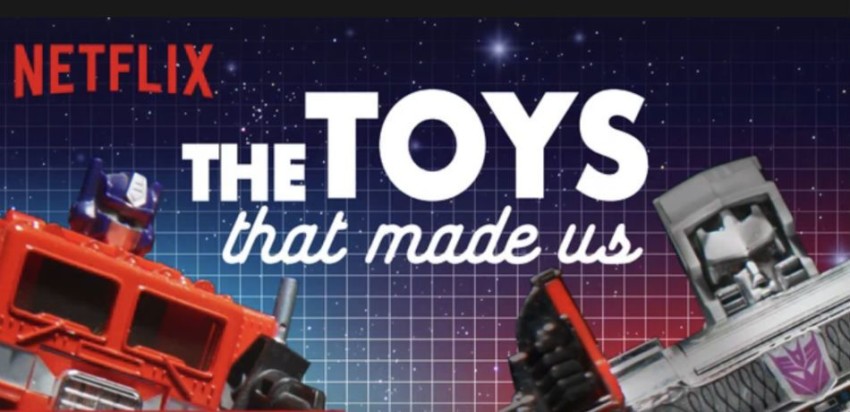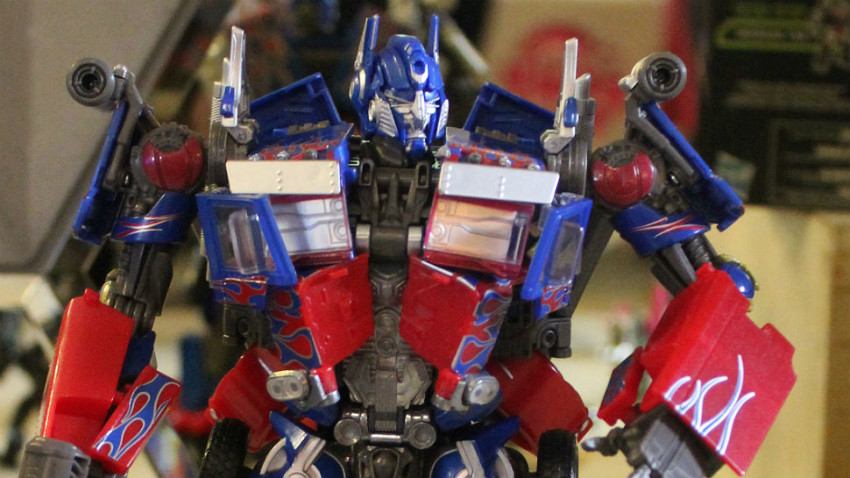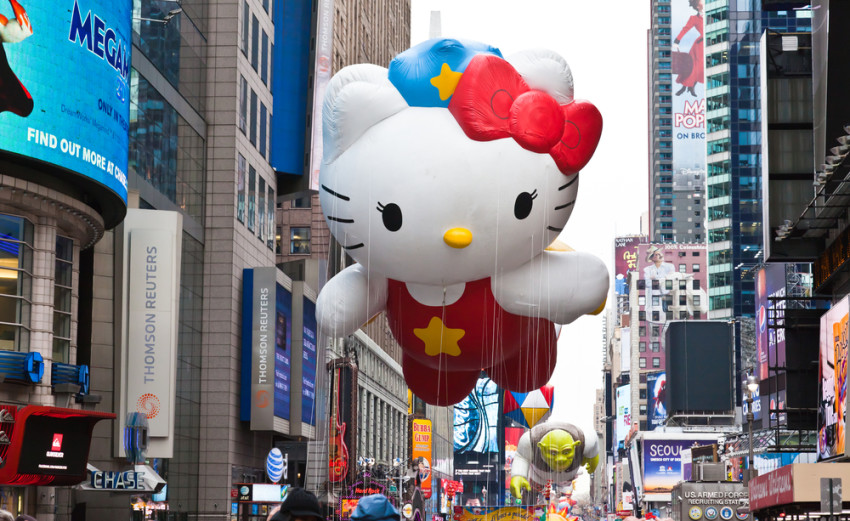The Toys That Made Us
June 6, 2018 · 0 comments
By Raz Greenberg.  In case you missed the hype, The Toys that Made Us is a Netflix documentary show devoted to successful toy brands, made from an unapologetic fannish perspective. With each episode telling the story of a different brand, the show’s producers treat such cultural landmarks as Lego and cynical moneymakers as Masters of the Universe with equal respect. Even when the show takes a more critical tone, it’s always aimed at specific marketing decisions rather than the overall phenomenon of trying to make as much money as possible from children crying in front of their parents in a toy store (in fact, an interviewee in the episode devoted to Masters of the Universe described witnessing this exact scene in a toy store with a very big, satisfied smile on his face). This approach, coupled with YouTube-like aesthetics, define the show’s target audience pretty clearly: it’s a nostalgic treat for the children of ‘80s. Being a child of the 1980s, I certainly had fun watching the first four-episode season, but going into the second season (which debuted on 25th May) I knew better than to expect serious journalism.
In case you missed the hype, The Toys that Made Us is a Netflix documentary show devoted to successful toy brands, made from an unapologetic fannish perspective. With each episode telling the story of a different brand, the show’s producers treat such cultural landmarks as Lego and cynical moneymakers as Masters of the Universe with equal respect. Even when the show takes a more critical tone, it’s always aimed at specific marketing decisions rather than the overall phenomenon of trying to make as much money as possible from children crying in front of their parents in a toy store (in fact, an interviewee in the episode devoted to Masters of the Universe described witnessing this exact scene in a toy store with a very big, satisfied smile on his face). This approach, coupled with YouTube-like aesthetics, define the show’s target audience pretty clearly: it’s a nostalgic treat for the children of ‘80s. Being a child of the 1980s, I certainly had fun watching the first four-episode season, but going into the second season (which debuted on 25th May) I knew better than to expect serious journalism.
But I was pleasantly surprised. The show’s producers really tried harder this time around. While still being overtly forgiving towards dirty marketing ploys in the name of its admiration for the brands it covers, The Toys that Made Us definitely attempts to go deeper in its second season, as evident by the two episodes devoted to Japanese brands and their way to the North American market – Transformers and Hello Kitty.
The opening sequence of the Transformers episode, while keeping the general amused tone that accompanied the show so far, also demonstrates the attempt to provide the audience with a bigger and deeper picture compared to the previous season. It traces the roots of the toy line to the Japanese toy industry at large and its relationship with the American post-war policy towards Japan, reveals a connection between what would become the Transformers toy line and the attempt to market the original G.I. Joe figures in Japan, and has some fun describing the hurdles that Hasbro met upon the initial introduction of the Transformers to the American market – from internal problems at Marvel Comics, charged with localising names and characters for the brand (where most staff members felt working on a toy tie-in was beneath their dignity) to the unexpected competition posed by Tonka (who actually managed to introduce their own line of transforming robot toys – the low-quality Gobots, also licensed from Japan – a few months ahead of Hasbro). It’s not a detailed history lesson, for sure, but it’s a nice summary, with close attention being paid to the cultural background that surrounds the story.
 And nowhere is this cultural background more obvious than in the episode’s featured interviews with Japanese staff members of Takara, the manufacturer of the different toy lines that came together to become the Transformers in the west. These staff members, chief among them lead designer Hideaki Yoke, portray such a humble attitude and at times seem genuinely amazed that their work went on to become a multi-million dollar franchise and an inspiration for Hollywood figures as Steven Spielberg and Michael Bay. It’s a stark contrast to the overconfident and sometimes downright smug attitude of most of the American staff interviewed in the episode (or, for that matter, in most of the show’s other episodes as well). But that’s where the episode reveals what the story of the Transformers is really all about – and it’s about more than transforming robot toys. It’s the story of a highly successful collaboration between Japan and North America, with the Japanese toy designers bringing in their creativity and the American marketing executives bringing in their talent for making money.
And nowhere is this cultural background more obvious than in the episode’s featured interviews with Japanese staff members of Takara, the manufacturer of the different toy lines that came together to become the Transformers in the west. These staff members, chief among them lead designer Hideaki Yoke, portray such a humble attitude and at times seem genuinely amazed that their work went on to become a multi-million dollar franchise and an inspiration for Hollywood figures as Steven Spielberg and Michael Bay. It’s a stark contrast to the overconfident and sometimes downright smug attitude of most of the American staff interviewed in the episode (or, for that matter, in most of the show’s other episodes as well). But that’s where the episode reveals what the story of the Transformers is really all about – and it’s about more than transforming robot toys. It’s the story of a highly successful collaboration between Japan and North America, with the Japanese toy designers bringing in their creativity and the American marketing executives bringing in their talent for making money.
There are a few small problems with the episode, mostly having to do with the way interviews with the Japanese staff were handled: the decision to overdub the interviewees with English narration rather than provide translation subtitles resulted in mispronunciation of a few Japanese words. The bigger problems, however, are with what’s missing from the episode. While providing a lot of screen time to Japanese staff members of Takara, it totally ignores the Japanese and Korean involvement in the production of the Transformers animated show. When American interviewees speak about their childhood trauma of witnessing the great Autobot massacre of 1986 (otherwise known as Transformers: The Movie) it might have been nice to have included a comment from director Nelson Shin. I also think that legendary mecha designer Shoji Kawamori deserved to be interviewed or at least mentioned, especially since the episode does touch upon the way Hasbro borrowed Kawamori’s VF-1 Valkyrie toy from the Macross franchise, giving it a new paint job and renaming it Jetfire, neglecting to mention that Kawamori also worked on the original Diaclone toyline that served as a basis for the Transformers. But historical issues aside, the episode has great story to tell, and tells it very well.
And if the Transformers episode is the story of a successful Japanese-American collaboration, the Hello Kitty episode is the story of a Japanese phenomenon that took America by storm, and – unlike the Transformers – one whose developers always intended on conquering th eworld. Again, the episode opens with a solid introduction to the cultural background behind the Hello Kitty brand, from the Japanese tradition of giving small gifts and the design of Japanese dolls to the rise of girls’ manga. The episode then moves to the story of the development of the Hello Kitty character throughout the years as the attitudes in Japanese towards the cute culture kept changing, but the story that the producers are clearly more interested in is the one of the character’s coming to America.
 Despite initial failures to push the brand into the American market using door-to-door salesmen, the brand’s owner Sanrio just wouldn’t give up, eventually succeeding in making Hello Kitty a fashion statement. This success owes much to the insistence of the people involved, with the focus given mostly to Sanrio’s founder and CEO Shintaro Tsuji and later to the company’s designer Yuko Yamaguchi. If the modesty of the Japanese staff members interviewed in the Transformers episode left me impressed, I couldn’t help raising an eyebrow at the self-congratulatory tone of Tsuji and Yamaguchi. But in the end, I was more than convinced that this self-admiration is justified: there’s no denying that Hello Kitty became big in America, just as Sanrio’s staff intended for it to be.
Despite initial failures to push the brand into the American market using door-to-door salesmen, the brand’s owner Sanrio just wouldn’t give up, eventually succeeding in making Hello Kitty a fashion statement. This success owes much to the insistence of the people involved, with the focus given mostly to Sanrio’s founder and CEO Shintaro Tsuji and later to the company’s designer Yuko Yamaguchi. If the modesty of the Japanese staff members interviewed in the Transformers episode left me impressed, I couldn’t help raising an eyebrow at the self-congratulatory tone of Tsuji and Yamaguchi. But in the end, I was more than convinced that this self-admiration is justified: there’s no denying that Hello Kitty became big in America, just as Sanrio’s staff intended for it to be.
However, while the episode goes into detail about how this happened, it is somewhat vaguer about the reasons why. The character’s design (which, as the episode notes, hasn’t really gone through drastic changes since its introduction in the 1970s) is mentioned, and to a certain degree discussed, but it’s here that the producers could have made an extra effort and come up with a design scholar to comment on the issue – I think Scott McCloud could have made a great interviewee on the subject. There are bigger questions that come up after watching the episode, like why Hello Kitty remains a rather unique phenomenon in its massive success in the west compared to other brands of Japan’s cute culture (or maybe not – perhaps Hello Kitty opened the door for the later Pokémon craze, also based on cute little characters?). But it’s probably too much to expect The Toys that Made Us to go this deep. Entertaining the audience remains the producers’ top priority here, and they’re far more interested in hearing how Hello Kitty changed the lives of celebs and fashion figures rather than how it changed American culture as a whole. Still, like the Transformers episode before it, the Hello Kitty episode entertains without insulting the audience’s intelligence, and opens the door to further study for viewers who are curious enough. Both episodes left me curious enough to wonder what the show’s producer are up to next.
Raz Greenberg is the author of Hayao Miyazaki: Exploring the Early Work of Japan’s Greatest Animator.
Leave a Reply